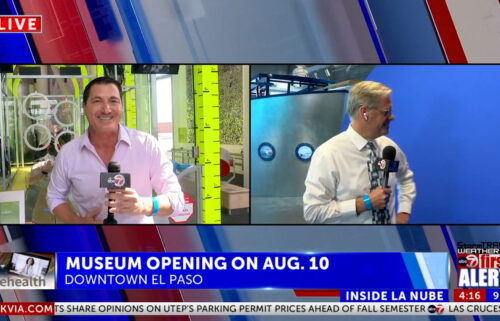Coronavirus leaves Conn. food distribution industry in flux
Click here for updates on this story
HARTFORD, Conn. (Hartford Business Journal) — When Gov. Ned Lamont ordered restaurants to temporarily suspend indoor service more than two months ago in response to the COVID-19 pandemic, Jim Charbonneau’s business instantly dropped off by about 40%, enough for him to start offering online ordering and curbside pickup.
But Charbonneau doesn’t run a restaurant. He’s co-president of Hartford Provision Co., a South Windsor-based food distributor whose customers are mostly restaurants, as well as cafeterias at K-12 schools and colleges.
“A very big part of our customer base is closed,” said Charbonneau, whose company does business as HPC Foodservice. “It’s starting to open gradually, but it closed, and it closed very abruptly.”
Meantime, food distributors that serve retail customers like grocery stores have the opposite problem, said Wayne Pesce, president of the Connecticut Food Association, which represents about 270 member companies mostly in retail food distribution.
“Anybody whose business is delivering to grocery stores, they’re busier than they’ve ever been,” Pesce said. “It’s a much different problem.”
The coronavirus has created major disruption in the food industry in recent months, and although grocery stores and restaurants have garnered much of the public’s attention, food distributors — which serve everything from eateries and supermarkets to college and grade-school cafeterias — have also seen significant upheaval.
And while the pandemic has hit Connecticut food distributors in a financially uneven manner, supply chain issues continue to mar the industry, even as the state economy slowly reopens.
In the early weeks of the restaurant and school closures, Branford-based Carbonella & DeSarbo Inc. saw business drop off by about 80%, said Vice President Maria DeSarbo. The downturn has leveled off to an extent — the company is now making about 20% less revenue compared to normal times — but the impact has been significant, she said.
The company mostly sells produce, and about three quarters of its customers are restaurants, DeSarbo said. Carbonella & DeSarbo has been able to redirect some bulk items like peppers and squash to retail customers. But it’s not enough to make up for all the lost business.
DeSarbo said she isn’t worried about her company going under, but if a lot of restaurants close their doors permanently in coming months it won’t come out unscathed.
An analyst for Swiss multinational investment bank UBS recently estimated that up to 20% of U.S. restaurants may close for good as a result of the coronavirus shutdown.
“I think we’re going to see quite a few restaurants close their doors and there will be a domino effect,” DeSarbo said.
She’s not alone in that thinking.
Florida-based marketing firm Acosta Sales & Marketing is predicting a slow recovery for the food service industry.
According to the U.S. Bureau of Labor Statistics, Americans, during normal times, spend about 44% of their yearly food budget (about $8,000) dining out.
If people were to reduce the amount they spent at restaurants by 14% due to COVID-19-related fears and closures, the food service industry would lose $178 billion per year, Acosta found. Foot traffic in front of restaurants, a key element in attracting customers, was down 91% as of May 7, according to Acosta.
In addition to reduced revenue, demand from restaurants, which were allowed to reopen outdoor dining services on May 20, has changed drastically, making it difficult for distributors to figure out how much food to buy.
West Haven’s City Line Food Distributors, which sells to about 1,800 independently owned restaurants, has had to throw out some perishables that went unsold, said Robert Berkowitz, the company’s president. City Line, which had to reduce its workforce due to the pandemic, currently employs about 211 people, and has seen revenues drop between 30% and 40%, depending on the week. When figuring out what products to purchase and how much, City Line uses algorithms based on data the company has amassed over the years on customer buying habits.
“The [current] demand is very much different and the projections and algorithms aren’t useful now,” Berkowitz said. “The data that we have is of some value, but it’s not as accurate as it was.”
City Line received funds through the federal Payroll Protection Program, but Berkowitz declined to specify how much.
Supply chain disruption
Food distributors that serve retail clients face their own challenges, even though demand has increased, said Pesce, the Connecticut Food Association president.
Weeks of panic-shopping led to shortages in products like toilet paper and some canned goods, Pesce said. That kind of buying appears to have largely subsided since the beginning of May, but now supply chain issues are leading to meat shortages.
“Right now there’s some supply chain disruption for a couple reasons for [meat],” including some meat-processing plants being shutdown due to COVID-19 outbreaks, Pesce said. “You may go into the store, and they might not have a particular cut [of meat].”
That shortage is driving up prices, Pesce said, and will continue to do so until the supply chain problems are worked out.
Grocery store prices grew 2.6% in April, which was the biggest monthly increase since 1974, according to the Bureau of Labor Statistics.
Pesce said he has worked with food-service distributors — including DeSarbo — on redirecting products from restaurants to grocery stores. However, major differences in how food service and retail distributors operate make it difficult to make a seamless transition.
For example, restaurants are willing to purchase — and cook with — misshapen produce like tomatoes, but grocery stores won’t because customers are a lot less likely to buy them.
Meantime, other food service distributors, like HPC, have been finding alternate business lines.
In an effort to recoup some lost revenue, and provide a grocery-store alternative for those wary of crowded spaces, HPC has started an online service, Charbonneau said. Customers can order food usually sold to restaurants, and pick it up curbside at the company’s South Windsor warehouse. Since HPC started the service it has had about 250 weekly customers, Charbonneau said.
Distributors are also working closely with restaurant customers on alternate payment plans, Berkowitz said. City Line has even hosted webinars for restaurants it serves on topics like the federal CARES Act, and how to get loans through the Paycheck Protection Program.
“We’ve been very active, because what happens to our customers affects us,” Berkowitz said.
Even though the current situation is far from ideal, DeSarbo and other food distributors doubt the pandemic presents an existential threat to the industry.
“Fortunately, we sell food, and people need food,” DeSarbo said. “I don’t see us coming near going out of business.”
Please note: This content carries a strict local market embargo. If you share the same market as the contributor of this article, you may not use it on any platform.




